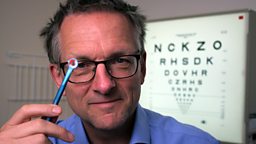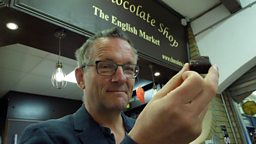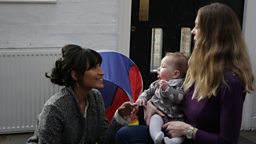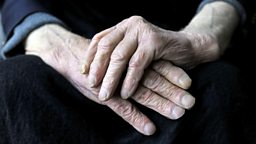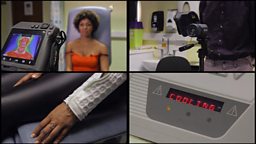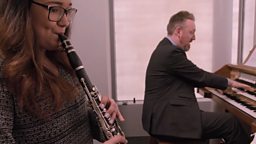Phobias
Ten million people in the UK have a phobia – a fear so intense that it becomes debilitating. But there’s a new technique being trialled that’s claimed to cure a lifelong phobia in a matter of hours.
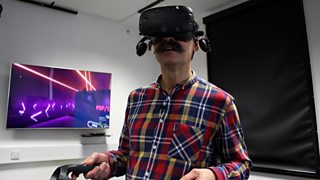
VIRTUAL REALITY (VR) THERAPY
The therapy uses virtual reality – technology developed from computer games – to guide people through a simulated world.
VR technology has been used in the past to treat people with phobias, but has always required a real-life therapist to guide the patient through the treatment. What’s different is that this new technology features an inbuilt virtual reality therapist, so that the whole treatment is self-contained and immersive.
It has been developed at the University of Oxford, and Trust Me presenter Alain Gregoire went to try it for himself. Alain had lived with a phobia of heights for decades. When he ventured anywhere high, his heart would beat faster, he got pains in his legs and back, and was unable to move. Over the years, he had tried to cure himself by repeated exposure to heights, but it had never worked.
For the new treatment, he had to wear a VR headset and was greeted by the virtual therapist, who led him through a 10 storey shopping centre. At each floor he had to complete a series of tasks, which grew progressively harder. Tasks included leaning out to pick apples, rescuing a kitten from a tree and walking across a rickety bridge.
The team which developed this VR therapy programme is led by Professor Daniel Freeman. He explains that what makes VR so effective is that people consciously know it is not real, so they can try things they would not do in the real world, yet their mind and body respond as though it is real. This allows people to re-evaluate their fears and build up new memories of safety which should counteract their old fear memories.
Alain felt terrified during the two-hour therapy session – but it worked very effectively for him. At the end of the training he was able to look over a real-life balcony which he was previously too afraid to do, and months later, he is still able to tolerate heights in a way he had never been able to before the therapy.
GENERAL RESULTS
This type of therapy has proven extremely successful in early trials. Daniel ran a scientific study with people who have lived with a fear of heights for about 30 years. They had five sessions of VR therapy, each lasting about two hours. In every case, those who underwent the VR therapy showed a reduction in fear of heights, with the average reduction being 68%.
Daniel now hopes to develop the technology to help other people with mental health conditions, including depression, OCD and schizophrenia.
More information about the study can be found here:







